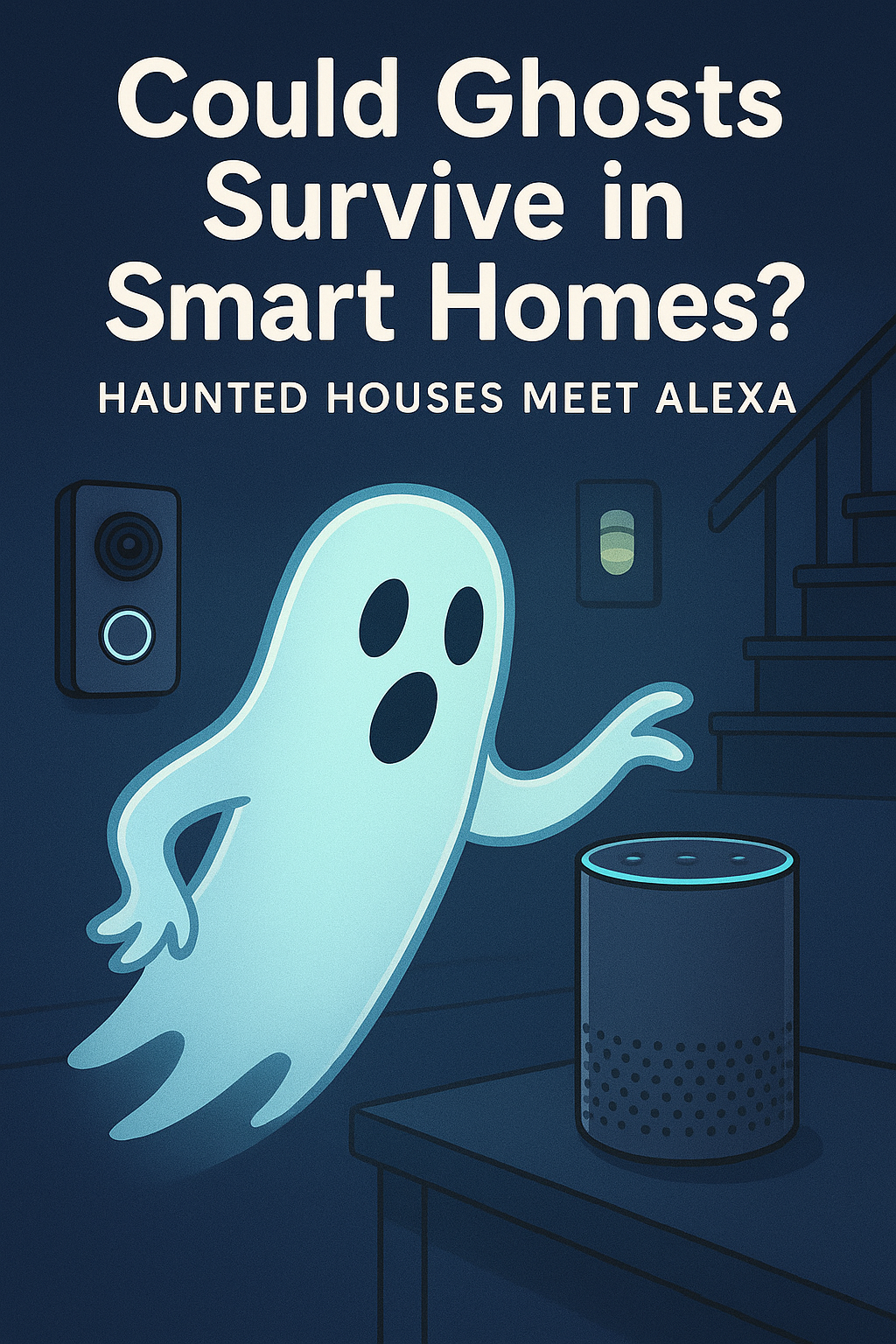Could Ghosts Survive in Smart Homes? | Haunted Houses Meet Alexa

The haunted house has long been a cultural fixture—dimly lit corridors, dusty attics, and candle flames that flicker at just the wrong moment. But today’s homes are changing fast. The gothic mansions of old are giving way to sleek, WiFi-enabled apartments where smart speakers wait for your command, security cameras watch 24/7, and motion sensors flip the lights on before you’ve even reached the switch.
That raises a curious and slightly chilling question: could ghosts survive in smart homes? In other words, when haunted houses meet Alexa, Ring cameras, and AI-powered devices, do spirits get exposed—or do they find clever new ways to play with technology?
Ghosts vs. Gadgets | A Clash of Eras
Traditionally, ghost stories relied on uncertainty. The mysterious footsteps in an empty hall, the inexplicable cold spot, or the fleeting figure glimpsed in the corner of your eye. But smart homes thrive on the opposite: precision, data, and surveillance.
- Surveillance cameras see what our eyes miss.
- Microphones record what our ears can’t catch.
- Sensors detect movement we might never notice.
On paper, it seems like the perfect ghost trap. But history shows us something else: the paranormal has always found ways to adapt to human tools. Once it was candle flames, then Polaroid photos, then tape recorders. Each new technology became another tool in both detecting—and debunking—spirits.
So, in the age of Alexa and Google Home, would ghosts vanish, or simply go digital?
Alexa, Who Just Spoke?
Smart assistants are constantly listening, waiting for “wake words.” Paranormal investigators once used EVP (Electronic Voice Phenomena) sessions to capture ghostly whispers on analog tapes. Now, Alexa or Siri could inadvertently become the new EVP recorder.
- What if Alexa logs a command that no one in the house gave?
- What if Google Home suddenly responds in the middle of the night?
Skeptics will point out that false activations are common—background TV dialogue, muffled sounds, or even quirks in the software. But believers might argue: this is exactly how ghosts slip through, disguised as “glitches.”
Interestingly, there are already viral Reddit stories of Alexa laughing unprompted or responding to empty rooms. While engineers blame software bugs, others couldn’t help but wonder: is Alexa haunted?
Ring Cameras and Ghostly Evidence
Doorbell cameras and indoor security systems like Ring or Nest flood the internet with strange footage: unexplained orbs, shadowy figures, or lights flickering on without cause. YouTube and TikTok are full of “ghost caught on camera” clips—often dismissed as dust particles or camera glitches.
But here’s the irony: the more cameras we install, the more ghost footage emerges. It’s not that spirits are appearing more often, but that constant surveillance ensures every odd movement is recorded.
Could this mean that smart homes don’t kill ghost stories but multiply them?
Motion Sensors vs. the Spirit World
Motion sensors rely on infrared and heat detection. Since ghosts are typically described as cold or energy-based rather than warm-blooded, some argue they would never trigger these systems. That could make them invisible to the very tech designed to protect us.
On the other hand, paranormal investigators often report spikes on EMF meters (electromagnetic fields). If that’s true, then smart devices—sensitive to interference—might actually experience ghostly tampering. Random light flickers, WiFi interruptions, or sudden smart lock malfunctions could all be signs of the supernatural at play.
The Digital Poltergeist | Ghosts Adapting to Tech
One unsettling possibility is that ghosts don’t just survive in smart homes—they thrive. Imagine:
- Smart bulbs flashing Morse code messages.
- Playlists suddenly switching to eerie songs from decades past.
- Thermostats dropping the temperature to “haunting levels.”
- Security cameras looping footage like a paranormal hack.
Poltergeist activity has always been about disruption. In the digital age, disruption means hacked routines and corrupted tech. Paranormal believers suggest that spirits manipulate energy. And since WiFi, Bluetooth, and electricity are all energy systems, the modern ghost might simply find more buttons to push.
Haunted WiFi and Phantom Glitches
Ghosts in smart homes might not be seen but felt through “digital hauntings.” Think:
- Devices pairing with phantom Bluetooth signals.
- Lights turning on with no history in the app log.
- Voice commands appearing in smart assistant records with no identifiable source.
Cybersecurity experts already warn of digital vulnerabilities. But what if some “ghost in the machine” is more literal than we imagine?
Cultural Shift | From Haunted Houses to Haunted Tech
Haunted houses used to be physical—creaking staircases, broken mirrors, and candle-lit hallways. Now, haunted life might be experienced through digital folklore. Instead of tales about footsteps in the attic, we’ll hear stories of:
- Haunted voice assistants that talk back.
- Security archives full of unexplained figures.
- WiFi signals that “carry voices.”
Already, ghost tours and paranormal TV shows are incorporating modern gadgets. Apps claim to detect spirits through smartphones. TikTok ghost hunters use iPhone night mode to catch “unseen entities.” Haunted homes are going digital, whether ghosts like it or not.
So, Could Ghosts Survive in Smart Homes?
The answer might not be survival—it’s evolution. Ghosts, if they exist, have always woven themselves into human culture, adapting to our fears and technologies. From flickering lanterns to static-filled radios, from Polaroids to CCTV, each new invention didn’t destroy ghost stories—it created new ones.
In the era of Alexa and Ring cameras, ghosts may not only survive—they may become viral sensations. Hauntings could shift from local legends to shareable clips, debated not in candle-lit séances but in YouTube comment threads.
So, when the next strange notification pings on your phone, or your smart speaker whispers without being asked, remember: the ghosts of the future may not rattle chains. They might just rattle your WiFi.
Haunted houses aren’t dying; they’re evolving into haunted networks. And if history is any guide, ghosts will always find a way to keep up with us—whether through a creaky stair or a creepy notification at 3 a.m.




